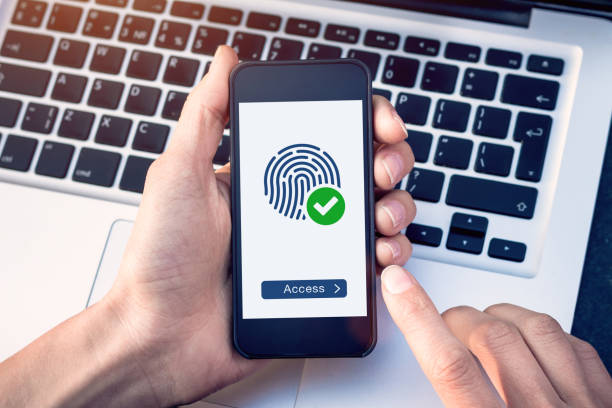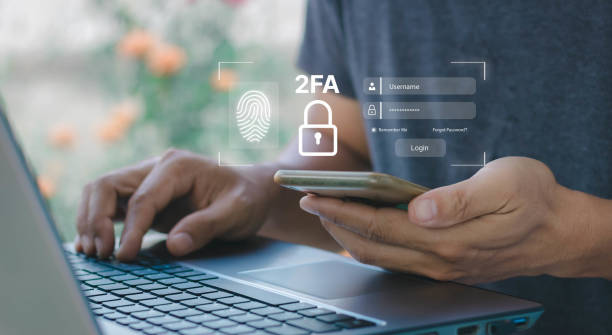In present day digital age, authenticating users has come to be essential for any agency. With the rise of cybercrime and fraud, groups need to take stringent measures to make certain that their customers are who they declare to be. Lamentably, traditional password-based authentication is now not enough to guarantee the security of your customers’ bills. As generation evolves, hackers have end up extra advanced and complex, making it easier to break into person debts.

To cope with this assignment, agencies are adopting multi-layered approaches to authentication. Those approaches no longer most effective authenticate users however also assist to mitigate fraud by way of detecting and preventing unauthorized get admission to. This blog will speak each of these five layers in detail, along with their blessings and barriers. By using the give up of this weblog, you will higher understand how multi-layered authentication let you comfortable your users’ bills and mitigate fraud.
Table of Contents
Password-based totally authentication
Password-based totally authentication is the most not unusual form of person authentication and is the primary layer in multi-layered authentication. The user presents their username and password, and if the credentials are correct, the user gains get right of entry to to the system or application. Password-primarily based authentication is a easy and convenient manner to authenticate customers and is broadly used in lots of agencies. However, it has a few boundaries that make it much less at ease than different styles of authentication.
One of the most great drawbacks of password-primarily based authentication is that customers have a tendency to use vulnerable passwords which are easy to wager or crack. Many users also reuse the equal password for a couple of money owed, which makes them at risk of credential-stuffing attacks. Credential stuffing attacks occur while an attacker uses stolen usernames and passwords from one website to access other web sites where the consumer has used the equal credentials. This is why users have to use complicated and unique passwords for each account.
Any other hassle of password-primarily based authentication is that passwords can be effortlessly stolen or intercepted. Hackers can use diverse techniques to scouse borrow passwords, together with phishing, keylogging, and brute force assaults. Once the hacker has get right of entry to to the consumer’s password, they are able to gain get entry to to the consumer’s account and perform fraudulent sports.
issue authentication

issue authentication (2FA) is the subsequent layer that can be used to improve the safety of user bills. In traditional password-based authentication, users handiest need to go into their username and password to advantage get right of entry to to their accounts. However, with 2FA, customers must offer a further credential, normally a one-time code or a biometric verification, to advantage access to their accounts.
The additional layer of security supplied by 2FA makes it distinctly difficult for hackers to benefit unauthorized get admission to to user bills. Even supposing a hacker obtains a consumer’s password, they could nevertheless need the authenticating approaches to gain get admission to to the account. This significantly reduces the risk of fraud and unauthorized get entry to to consumer accounts.
One-of-a-kind 2FA strategies may be used, consisting of SMS-based authentication, app-primarily based authentication, hardware tokens, and biometric authentication. SMS-based authentication is the most typically used 2FA approach, in which users receive a one-time code via SMS to their registered phone range. On the other hand, app-based authentication makes use of a cellular app to generate the only-time code.
Behavioral biometrics
Traditional biometric authentication, which includes fingerprints and facial recognition, are used to confirm the identification of a consumer. Then again, behavioral biometrics uses machine mastering algorithms to research users’ behavior styles to discover anomalies that would imply fraudulent interest. This form of authentication is based totally at the truth that each man or woman has specific characteristics of their behavioral patterns, such as typing pace, mouse movement, and even how they hold their device.
Behavioral biometrics is a passive authentication method, meaning customers don’t need to perform unique movements to authenticate themselves. The device continuously video display units consumer behavior in actual time and compares it to previous patterns. If there may be a sizeable deviation from the norm, the machine can flag it as a ability fraud strive and set off extra verification.
Moreover, the benefits of the usage of behavioral biometrics for authentication are large. For the reason that machine analyzes non-stop consumer conduct patterns, hackers cannot mirror those behaviors, making it tough to skip this accretion of authentication.
Device recognition

Tool popularity is an important layer of authentication which could help businesses save you unauthorized get right of entry to and mitigate fraud. In ultra-modern virtual age, wherein people use multiple gadgets to access their bills, figuring out and verifying a user’s device will become vital. Tool popularity uses numerous strategies to discover and verify the tool, which includes fingerprinting, geolocation, IP deal with, and device id.
One of the advantages of device popularity is that it may help agencies stumble on and save you account takeover attacks. Account takeover assaults occur while a hacker profits unauthorized get entry to to a consumer’s account, frequently through compromised login credentials. Device recognition can help businesses identify whether or not a person is logging in from a familiar tool or area. If not, the commercial enterprise can ask for extra authentication measures, including a one-time password or biometric authentication.
Another gain of tool popularity is that it can assist businesses prevent fraud. By identifying the device a person is logging in from, corporations can hit upon whether the device has been related to fraudulent activities. If the device has a history of fraudulent sports, the business can deny get admission to to the account or ask for additional authentication measures.
Chance-primarily based authentication
Risk-based totally authentication is the 5th and final layer businesses can use to at ease their users’ debts. This technique analyzes various factors to decide the risk related to a specific person and adjusts the authentication requirements hence. Through the use of this approach, businesses can lessen the burden on customers and enhance the overall person experience whilst keeping their debts’ safety.

The verdict
Authentication is a essential issue of user protection in modern-day digital age. That said, traditional password-primarily based authentication is no longer sufficient to shield users’ debts from hackers and fraudsters. Consequently, companies need to adopt multi-layered authentication techniques to decorate person protection and mitigate fraud.
Read: How To Start An Online Clothing Business
Pranay, a coding maestro weaving digital magic with Dot Net,Angular. With 4+ years in web development,he specialize in crafting seamless solutions. Beyond coding, Pranay is a wordsmith, passionate about sharing insights through guest posts. Whether crafting code or narratives, he bring creativity and precision to every project. Connect to explore his coding journey and delve into the world where tech meets storytelling .follow us on X

